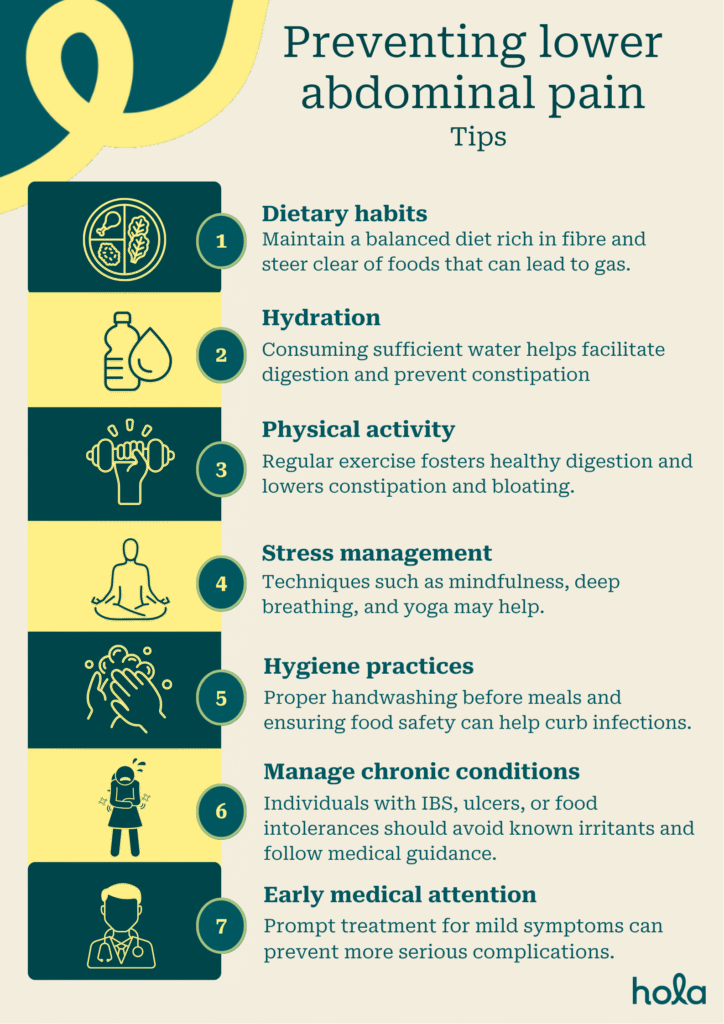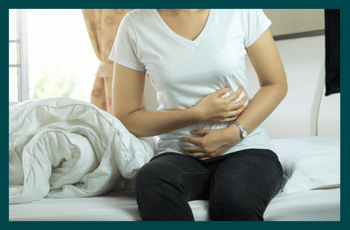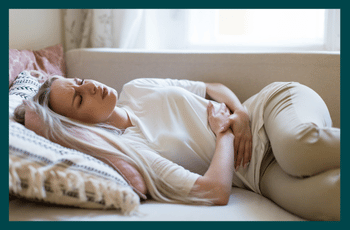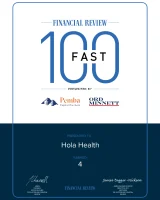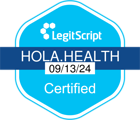Lower left abdominal pain: Causes, prevention & treatment
Written by the editorial staff writer at Hola. Medically Reviewed by Dr. Ammar AL-ANI, MBChB, CCBST, AMC.

Contents

Summary: Lower left abdominal pain can stem from digestive problems, reproductive health issues, urinary complications, or muscular strain. Identifying the underlying cause is essential for effective treatment, which might involve changes in daily habits, staying well-hydrated, medications, or, in some cases, surgery. Prevention focuses on balanced nutrition, stress management, and routine health evaluations. Listen to your body and seek help when needed.
Ever felt a weird ache or discomfort in your lower left side of your abdomen and wondered, “What ‘s going on?” You’re not alone. That spot is home to several key organs, so when something feels off, it's worth paying attention. From digestive problems to unexpected issues with the reproductive or urinary systems, lower left abdominal pain can stem from many causes. In Australia, abdominal pain is one of the most common reasons people visit their GP (general practitioner), with a rate of 2.1 presentations per 100 encounters, adding up to around 2 million visits each year. Let’s unpack the possible causes, how to prevent it, and what actions to take if it occurs.
What is lower left abdominal pain?
Lower left abdominal pain refers to discomfort or pain on the left side of your abdomen, usually just below the belly button. This area contains sections of the colon, the left ovary and fallopian tube in women, and other organs. The pain can vary from mild to severe and can be caused by several conditions, including gastrointestinal disorders, gynecological concerns, urinary tract infections, and muscle strain.Why does it happen on the left side?
Left-sided abdominal discomfort can arise from numerous conditions, contingent on the specific area and underlying reasons. Common digestive issues, such as gas, constipation, or indigestion, frequently cause temporary pain. More severe problems can arise, such as diverticulitis, which refers to the inflammation or infection of small pouches (called diverticula) in the colon. This condition usually affects the lower left side of the abdomen. Kidney-related concerns, like stones or infections, affect the left kidney and may result in sharp or cramp-like pain. In women, reproductive health issues such as ovarian cysts, ectopic pregnancies, or endometriosis can lead to left-sided pelvic or abdominal discomfort. Muscle strain caused by overuse or injury can lead to localised pain. Additionally, other factors may contribute to this pain, such as hernias, urinary tract infections, or organ inflammation, including the spleen. If the pain is severe, persistent, or accompanied by symptoms like fever, vomiting, or blood in the stool or urine, it’s crucial to seek medical help.
Also read: Aching in the Right Side of the Stomach: Why and What to do?
What can cause lower left abdominal pain?
Lower left abdominal pain may stem from a range of conditions, from mild to severe. Typical causes include:
- Diverticulitis: A frequent cause in adults over 40, this refers to the inflammation or infection of small pouches in the colon.
- Gas or constipation: Bloating brought on by trapped gas or hard stools can lead to cramping and discomfort in the lower left abdomen.
- Irritable bowel syndrome (IBS): This chronic digestive condition commonly leads to lower abdominal discomfort, bloating, and changes in bowel habits.
- Kidney stones or infection: Stones moving through the urinary tract or an infection in the left kidney can generate sharp, radiating discomfort.
- Urinary tract infection (UTI): An infection in the bladder or urinary tract can cause lower abdominal pain, often accompanied by a burning sensation during urination.
- Ovarian issues (for females): Conditions like ovarian cysts, pain from ovulation, or ectopic pregnancy can result in pain on one side, including the lower left side.
- Hernia: An abdominal wall hernia can result in localised pain that intensifies with movement or straining.
- Inflammatory bowel disease (IBD): Disorders such as Crohn’s disease or ulcerative colitis may lead to persistent lower abdominal pain, accompanied by diarrhoea or bleeding.
If the pain is severe, ongoing, or associated with additional symptoms like fever, vomiting, or bleeding, prompt medical attention is advised.
Feeling sick and unsure why? Speak with a GP online in 15 minutes.
How doctors can identify the cause of lower left abdominal pain
Healthcare providers can determine the cause of lower left abdominal discomfort through medical history, physical examination, and diagnostic evaluations. Initially, they will inquire about the patient's symptoms, the duration of pain, bowel habits, dietary habits, and any existing health conditions. During the physical assessment, the doctor may gently palpate the abdomen to check for tenderness, swelling, or abnormal masses. Depending on the findings, further investigations may be requested, including blood tests to identify infection or inflammation, urine tests for urinary tract problems, or imaging procedures like ultrasound, X-ray, or CT scan for a better visualisation of internal organs. In women, a pelvic exam or gynaecological ultrasound might be performed to evaluate reproductive health. These steps aid in identifying the exact cause and determining proper treatment.Sharp left lower abdominal pain in females: when to worry
Acute lower left abdominal pain in women can sometimes be benign; however, in some instances, it may indicate a more serious condition requiring medical attention. Concern should arise if the pain is sudden, intense, or persistent, particularly when accompanied by fever, vomiting, dizziness, heavy vaginal bleeding, or atypical discharge. Instances like ovarian cyst rupture, ectopic pregnancy, pelvic inflammatory disease, or endometriosis can result in sharp pain and might require urgent care. Additionally, digestive or urinary issues such as diverticulitis or urinary tract infections may exhibit similar symptoms. If there’s uncertainty or if symptoms worsen, seeking medical consultation promptly is advised to eliminate serious complications.
Also read: Types of stomach pain in women & possible causes
Can abdominal pain be prevented?
Here’s the information on preventing abdominal pain, organised into clear subtopics:
- Dietary habits: Maintaining a balanced diet rich in fibre and steering clear of foods that can lead to gas, bloating, or indigestion, such as fatty, spicy, or processed options, can aid in preventing various forms of abdominal pain.
- Hydration: Consuming sufficient water helps facilitate digestion and prevent constipation, a frequent cause of abdominal discomfort.
- Physical activity: Engaging in regular exercise fosters healthy digestion and lowers the likelihood of constipation and bloating.
- Stress management: Elevated stress levels can adversely affect gut health. Techniques such as mindfulness, deep breathing, and yoga may assist in alleviating stress-related abdominal pain.
- Hygiene practices: Proper handwashing before meals and ensuring food safety can help fend off gastrointestinal infections.
- Managing chronic conditions: Individuals with IBS, ulcers, or food intolerances should avoid known irritants and adhere to medical guidance to prevent flare-ups.
- Early medical attention: Obtaining prompt treatment for mild symptoms can prevent the development of more serious complications.

When to contact a doctor?
You should seek medical advice if abdominal pain is intense, persistent, or comes with worrying symptoms. These include:
- Sudden, intense pain: If the pain occurs abruptly and is sharp or severe, particularly in a particular area.
- Pain lasting more than a few days: If abdominal pain does not improve or escalates over time.
- Fever: A high temperature accompanied by abdominal pain might indicate an infection.
- Nausea or vomiting: Ongoing vomiting or an inability to retain food should be examined.
- Changes in bowel habits: Any new or worsening constipation, diarrhoea, or blood in the stool.
- Pain with urination: Discomfort during urination or blood in the urine may suggest a urinary tract or kidney issue.
- Unexplained weight loss or fatigue: These could signal a more serious underlying condition.
- For women: Severe pelvic pain, irregular periods, or abnormal vaginal bleeding should be promptly assessed.
How can telehealth help?
Telehealth makes it simple and stress-free to get quick medical advice for abdominal pain. With quick telehealth appointments, you can connect with an AHPRA-registered online doctor from the comfort of your home, no long waits or crowded clinics. Through a secure video or phone consult, you’ll receive a personalised assessment and advice. If needed, your doctor can issue legitimate instant scripts, medical certificates within minutes, or online GP referrals for further tests or specialist care. Telehealth ensures you get professional medical support fast which is safe, convenient, and available 24/7.
Treatment options for lower left side abdominal pain
Treatment options for pain in the lower left abdomen vary based on the underlying cause and can range from simple home remedies to medical treatment:
- Dietary and lifestyle changes: For pain from gas, constipation, or mild digestive issues, increasing fibre consumption, drinking more water, exercising regularly, and avoiding trigger foods might alleviate symptoms.
- Medications: Over-the-counter pain relievers, antacids, antispasmodics, or laxatives can offer temporary relief. Doctors may prescribe antibiotics for infections, anti-inflammatory medications for conditions like diverticulitis, or hormonal treatments for pain related to reproductive issues.
- Surgical procedures: In situations such as kidney stones, significant infections, or bowel obstruction, interventions like fluid drainage, stone removal, or surgical procedures might be required.
- Management of chronic conditions: Long-term conditions like irritable bowel syndrome (IBS) or endometriosis usually necessitate ongoing management involving specific diets, medications, and regular consultations with specialists.
- Emergency care: Severe or sudden pain, particularly accompanied by fever, vomiting, or symptoms indicating internal bleeding, may require urgent hospitalisation and intervention.
Conclusion
Lower left abdominal pain might seem like a mystery, but it’s your body’s way of signalling that something’s going on. With some attention, healthy habits, and prompt care, you can solve the riddle and get relief. Listen to your gut, it usually knows what’s up!
FAQs
What causes lower left abdominal pain in females?
Lower left abdominal pain in females can be caused by:
- Ovarian cysts
- Menstrual cramps
- Irritable bowel syndrome (IBS)
- Urinary tract infections (UTIs)
- Constipation
- Ectopic pregnancy (pregnancy outside the uterus)
- Endometriosis (pain due to tissue growing outside the uterus)
- Pelvic inflammatory disease (PID)
- Hernia
- Diverticulitis or inflammation of the colon
Is sharp pain on the lower left side a sign of something serious?
Sharp pain on the lower left side can be linked to several conditions, some of which may be serious, such as ectopic pregnancy, ovarian cysts, pelvic inflammatory disease (PID), perforation of the bowel, or diverticulitis. While it may also stem from less concerning issues like gas, constipation, or muscle strain, it’s important to consult a healthcare provider if the pain is intense, ongoing, or accompanied by other symptoms like fever, nausea, or unusual bleeding to rule out more serious conditions.
Can ovulation cause left-sided abdominal pain?
Yes, ovulation can cause mild to moderate discomfort on the left side of the abdomen, known as Mittelschmerz. This pain occurs when an ovary releases an egg and is typically felt on the side where the ovary is active. The pain is generally temporary (a few hours to a day) and can be sharp or cramp-like. If the pain is severe or persistent, it is advisable to consult a healthcare professional.
How do I know if the pain is from my ovaries or digestive system?
The main differences are in the type and location of the pain:
- Ovary-related pain (e.g., ovarian cysts, ovulation) is usually felt on one side of the lower abdomen and may be sharp or cramp-like. It is often linked to the menstrual cycle and may be accompanied by bloating or changes in menstrual flow.
- Digestive system pain (e.g., constipation, diverticulitis, IBS) is often more widespread and felt in the lower abdomen. It is usually accompanied by bloating, changes in bowel movements, or gas.
Can stress or anxiety lead to abdominal pain on the left side?
Yes, stress and anxiety can cause abdominal pain, including on the left side. Stress can trigger muscle tightness, increase gut sensitivity, and disrupt digestion, causing symptoms like bloating, cramps, or constipation. This pain is often linked to gastrointestinal issues such as irritable bowel syndrome (IBS). If stress or anxiety is the cause, taking care of your emotional health could help relieve the pain.
Is left lower abdominal pain normal during menstruation?
Yes, mild to moderate pain in the lower left abdomen during your period is quite common and can be considered normal. This ache, commonly known as menstrual cramps, occurs as the uterus contracts to get rid of its inner lining. The pain is generally felt on the lower abdomen or pelvic area and may also spread to the lower back or thighs. However, if the pain is severe, lasts longer than usual, or is accompanied by other symptoms like heavy flow or dizziness, it’s wise to consult a healthcare provider.
When should I see a doctor for lower abdominal pain on the left side?
See a doctor if the pain is intense, sudden, persistent, or worsening. Watch out for additional signs like a fever, vomiting, unintentional weight loss, bloody stools, pain during urination, heavy bleeding, or dizziness. These signs could point to a more serious health concern that requires prompt professional care.
Can I get treatment for lower abdominal pain through telehealth?
Yes, you can start with a telehealth consultation. A healthcare provider can evaluate your symptoms, recommend tests, suggest home care, or prescribe medication. However, if your pain is severe, sudden, or is paired with serious signs like heavy bleeding or a high fever, an in-person visit may be necessary.
Need time off to recover? Get your medical certificate online within 15 minutes.
What we treat
- Cough
- Nausea & vomiting
- Fever
- Hayfever
- Fatigue
- Sore throat
- Acne
- Hair loss
- Gout
- Eczema
- Rosacea
- Sunburn
- UTI
- Erectile dysfunction
- Contraception
- Morning sickness
- Morning after pill
- Prostate health
- Anxiety
- Depression
- Stress
- Grief & loss
- Antidepressants
- Premature ejaculation
- Asthma
- Blood pressure
- Blood thinners
- Diabetes
- Cholesterol
- Migraines & headaches
- Allergies
- Body ache
- Heartburn & reflux
- Sleep disorder
- Pain relief
- Gastro
Related Articles
Disclaimer
This blog is for general informational purposes only and does not indicate that Hola Health provides all treatments or preventive measures mentioned. It is not intended to be a substitute for professional medical advice. Always seek the guidance of your doctor or other qualified health professional with any questions you may have regarding your health or a medical condition. For emergencies please immediately contact 000. Any medical topics discussed are intended to educate, not to imply availability through Hola Health.

Get affordable healthcare on your terms, with quick access to qualified, Australian-registered telehealth doctors & health practitioners, 24/7, 365 days a year. No more searching for ‘doctors near me‘ – Hola connects you instantly.
Address: 79 St Georges Terrace, Perth WA 6000
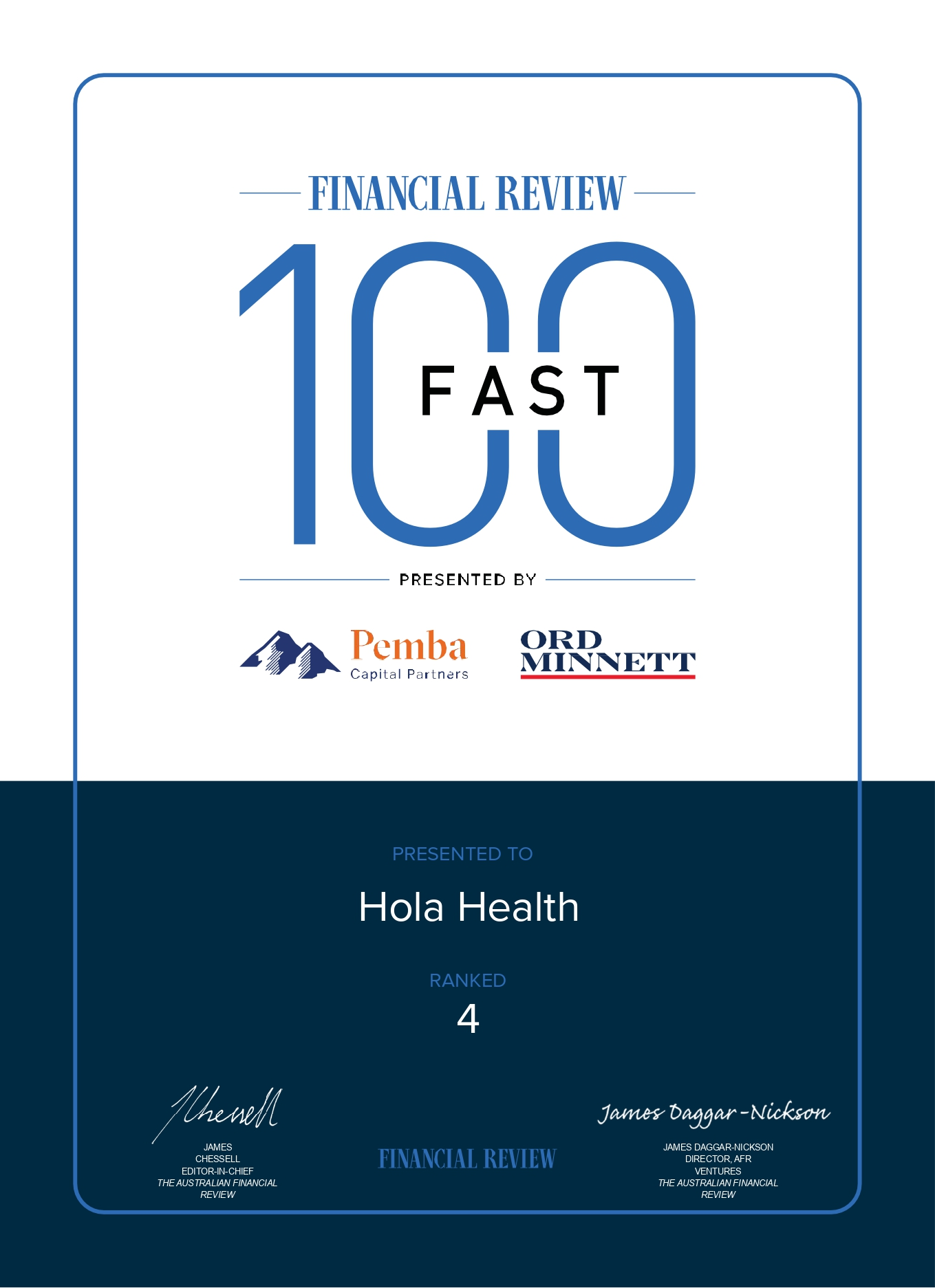

Hola Health App
Get affordable healthcare on your terms, with quick access to qualified, Australian-registered telehealth doctors & health practitioners, 24/7, 365 days a year. No more searching for ‘doctors near me‘ – Hola connects you instantly.
Call 000 for emergency or urgent medical help.
Address: 79 St Georges Terrace, Perth WA 6000
© Hola Health, a brand of Packapill Pvt Ltd


 Facebook
Facebook  X
X  Copy Link
Copy Link